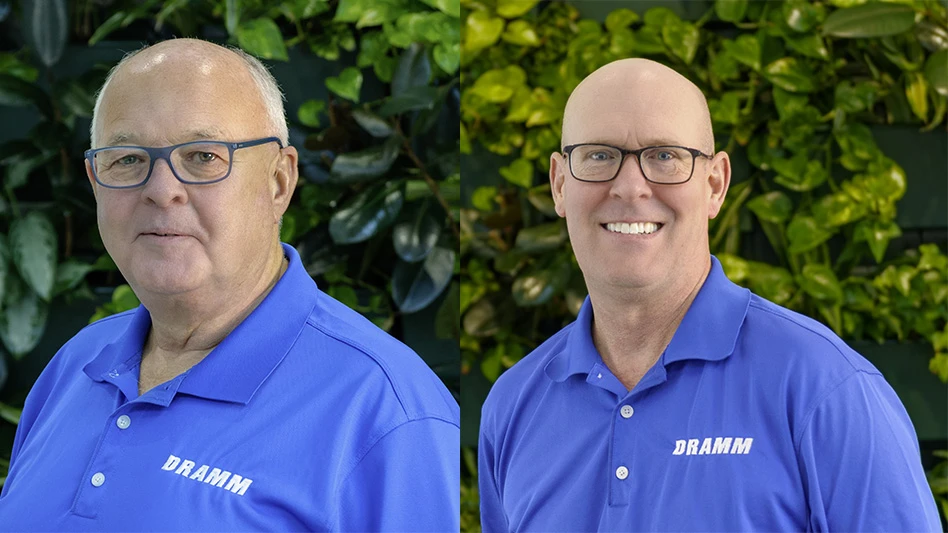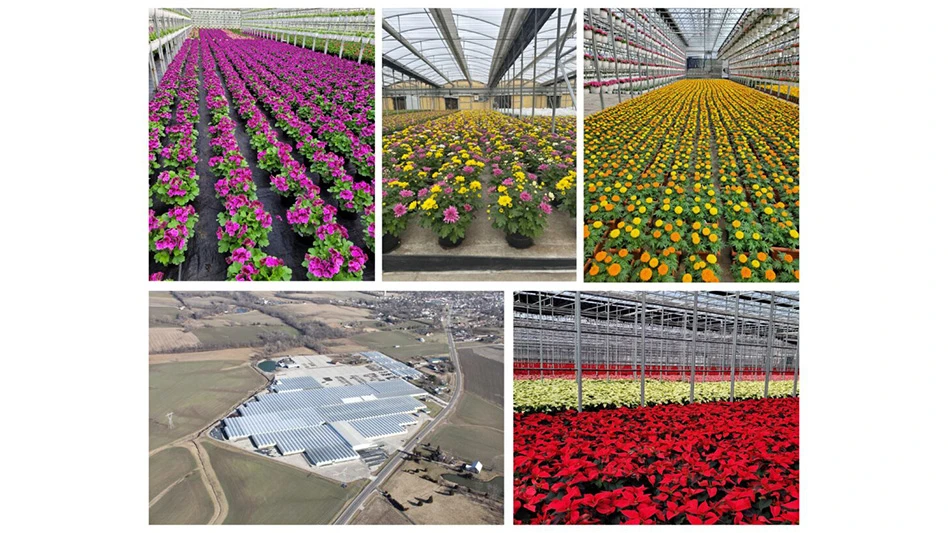 For landscape architects to be successful, there needs to be continuity of the supply chain. Photos courtesy of BC Landscape and Nursery Association. For landscape architects to be successful, there needs to be continuity of the supply chain. Photos courtesy of BC Landscape and Nursery Association. |
Authors of a recent study examined an ongoing debate in the discipline of landscape architecture: Exactly how much plant knowledge is required for professionals in the field? Robert Brzuszek, Richard Harkess and Eric Stortz of Mississippi State University evaluated the attitudes and perceptions of practicing landscape architects in the southeastern United States with regards to the importance of horticultural knowledge. The complete survey results were published in HortTechnology.
“Many recent discussions within the landscape community have focused on the decline of plant materials knowledge within the profession,” said Brzuszek, the report’s corresponding author and landscape architecture professor. “Historically, plant knowledge and the ability to select and incorporate plants into the design process has been a cornerstone in the practice of landscape architecture. However, a 2009 study reported that only two courses in planting design were required by the vast majority of accredited landscape architecture programs.”
Landscape firms that provide planting and management plans as part of their site-based services need employees with sufficient plant knowledge, or at least need someone in their office who has a specialization in plants, Brzuszek said.
The researchers mailed a 20-question survey to 120 landscape architects. The survey questions were designed to reflect the diversity of job types within the profession of landscape architecture—ranging from urban and regional planning to transportation planning to historic preservation—and included questions related to plant education and experience. The majority of the 63 respondents were seasoned landscape architects specializing in residential and commercial markets; responses came from professionals working in Louisiana, Mississippi, Arkansas, Tennessee, Alabama, Georgia and Florida.
‘Average’ knowledge
Nearly half of the participants (48 percent) believed they had an “average amount of plant materials knowledge.” Some firms or designers, including those surveyed, specialize only in urban or regional planning, GIS and land studies, industrial development, marketing, and recreation facilities, which preclude much plant knowledge, Brzuszek said. But the majority of the study’s respondents were in the residential market.
Although a majority of survey respondents had a “favorable opinion” of their own plant knowledge, they did not necessarily feel the same way about their peers. When asked if newly graduated landscape architecture students had a sufficient amount of plant materials knowledge, 71 percent of respondents indicated they did not. And 73 percent of respondents said they agreed that the profession of landscape architecture as a whole has distanced itself from plant materials when compared to previous years.
“The results from our study showed that respondents strongly felt that plant knowledge is an important part of their professional skills, and that recent graduates of landscape architecture and the members of the profession as a whole both appear to be more distanced from having strong plant expertise,” Brzuszek said. “Although a broad realm of resources and continuing educational courses are available, the professionals we surveyed felt that experience is still the best teacher for new graduates in the field.”
 Bridge the gap
Bridge the gap
Landscape architects are increasingly under pressure to improve their knowledge in civil arenas and plant knowledge therefore suffers, said Matt Edmundson, owner of Arbor Valley Nursery in Brighton, Colo.
“This provides a great opportunity to become a trusted resource for landscape architects, but that takes a lot of time. Plants are much harder to learn than hardscape products, for example. Ask them how they find information and how they decide what to use,” Edmundson said.
Instead of lamenting the lack of plant knowledge, growers must educate landscape architects.
“There is a fundamental lack of understanding in our culture -- not just with landscape architects -- about what it takes to produce plants. There isn’t a ‘standard’ that exists for plants to the degree engineered products have and there is a wide variety of what constitutes marketable or acceptable material. This is something that needs to be expressed by quantifying the value of increasing their knowledge,” Edmundson said.
Grower Terry Hines of Hale and Hines Nurseries in McMinnville, Tenn., wants to see a stronger plant curriculum in landscape architecture degrees.
“If colleges and universities could integrate some of their landscape architect education with an apprenticeship or hands-on training, it would help the entire industry,” Hines said.
Another form of education includes quantifying how a landscape architect’s lack of plant knowledge affects the bottom line, Edmundson said.
“We could help architects sell the value of true sustainable landscapes. Not just LEED certification to ensure that they are sourced from a certain distance, but the long-term maintenance costs of the plants they choose to specify. Do they require constant pruning into artificial balls? Are they high water users? Architects can sell higher initial investment if they can prove long-term cost reductions in water use, for example. For this they need to create an ongoing maintenance guide that spells out the proper times to cut back grasses for example, or how to prune or shear (or not prune and shear) to ensure the quality of the landscape and reduce long term costs,” Edmundson suggested.
It’s no surprise the nursery industry argues that many landscape architects don’t understand what plants are available in the trade and the characteristics of most plants. But Edmundson said growers don’t know enough about what architects need or want.
“Some growers market new products with a push model to influence demand without any tie back to production to ensure they can deliver it when or where it is needed,” he said. “To be successful, there needs to be continuity of the supply chain, a partnership between grower, distributor, architect and contractor. That doesn’t currently exist in our marketplace today.”
For more: Robert Brzuszek, rbrzuszek@lalc.msstate.edu; Arbor Valley Nursery, www.arborvalleynursery.com; Hale and Hines Nurseries, www.haleandhines.com.
Get curated news on YOUR industry.
Enter your email to receive our newsletters.
Explore the February 2012 Issue
Check out more from this issue and find your next story to read.
Latest from Nursery Management
- Pennsylvania Horticultural Society announces 2025 Gold Medal Plant winners
- GIE Media Horticulture Group wins five regional 2025 Azbee Awards of Excellence
- Get to know Pat Reilly with NewGen Boxwood and the American Boxwood Society
- Terra Nova Nurseries introduces rust-free and disease-resistant heucherella
- John T. Nickel, founder of Greenleaf Nursery Co., passes away at 89
- Three tours offered at 2025 Farwest Show
- Garden Media Group announces sixth annual Women in Horticulture Week
- Star Roses and Plants announces National Knock Out Rose Day






